


























































Since stain removal matters to your customers, each stain is an opportunity to impress them.


InkGo is the effective and safe way to remove ink stains from all types of fabric - including acetates. Use it to remove adhesives, too.




It's eco-friendly... California compliant, chlorinated-solvent and NPE free, biodegradable and non-combustible. And since InkGo is user-friendly and odor-free, it's pleasant to work with.





Use InkGo to deliver stain-free cleaning. You'll build your reputation for quality – and keep customers coming back.
To learn more, visit ALWilson.com or call 800-526-1188 A. L. WILSON CHEMICAL CO.
April 2019
Vol. 86, No. 1
Pre-Inspection 4 ‘Hurricane’ Warning Management Strategies 31 The Gang’s Talking It Up Diana Vollmer
Owner’s Office 34 Living Your Culture Out Loud Dan Miller


Spotting Tips 38 Pride of a Pro Martin Young Special Feature 40 University City Cleaners Goes ‘Wet’ Haley Jorgensen Special Feature 44 Pains,Train(ees) and Automobiles Kelley Carter

Clean


Rock U Like A Hurricane.... meaning the Clean Show event June 20-23 in New Orleans will rock you; the famous Hurricane drink on our front cover will too; and the town they call the Crescent City (because it lies in a crescent-shaped curve of the mighty Mississippi River). Oh, and, this Go Guide too is gonna rock you; powerpacked with fun-loving, voodoo-infused, locally-flavored references to the many things you can see and do while you’re visiting New Orleans this June, along with tips on getting around, staying cool, and so much more.
Tim Burke, Editor
So.... you want to be a drycleaning owner? Or maybe you are an owner and are thinking of expanding for the first time. Let two experienced drycleaning owners with four decades of combined experience walk you through their own personal tips and “To-Dos” when planning to make a purchase. There’s much to consider before you buy, and these two owners help you “check the boxes.”
Tim Burke, EditorSpecial Feature 46 Security Now At Your Dry Cleaner Justin Parafinczuk
Around the Industry 50
Yarns Spun Here 52 Polyester = Disco Classified Advertising 54 Advertiser Index 55
Wrinkle in Time 56 The Years Behind Us ... The Years Ahead

Scan this QR Code for help in finding the hidden hanger on this month’s cover. Good luck!










“The support from CBS was great. Even before we signed up, they were responsive and flexible in their approach. They have helped our team become more efficient.”

















“I don’t have to rely on anybody for information. I can see immediately what I have for inventory, orders and accounts receivable.”






Is that front cover shot of New Orleans’ famous Hurricane drink making you thirsty? ...Good! ...Mission accomplished!
Inside is your 2019 Clean Show Go Guide! (Along with other great content!)
In these pages you’ll find an eye-candy delight: Your guide to the summer-sizzling Crescent City and some things to see and do while in town for Clean ’19, June 20-23.
In our Eats ‘n’ Beats opening section, you’ll hear from a couple of locals, Alyssa and Andree, about their favorite haunts for eating, drinking, clubbing, touring, music, and generally having a blast, both within the French Quarter and beyond!
If you’re not walking the city, you may find yourself riding a horse-drawn carriage, a streetcar, a pedicab, or even boarding a steamboat to ply the mighty Mississippi. Read about all those ways to travel, as well as getting from the airport to your hotel, in our Getting Around section.
Publisher
Charles Thompson 312-361-1680 cthompson@ATMags.com
Associate Publisher/ National Sales Director
Donald Feinstein 312-361-1682 dfeinstein@ATMags.com
Editorial Director
Bruce Beggs 312-361-1683 bbeggs@ATMags.com
BurkeWe’ll also provide you with tips on staying comfortable in the humidity and heat of Louisiana. Here’s one: dress light but always bring another layer with you, as the local establishments prefer an “Arctic” level of air conditioning.
From “off the beaten path” to some of the well-known paths, check out the section Festivals, Outings, Shopping and More for some local area haunts to visit.
If you like to do that, “voodoo you do so well,” then plan for a rockin’ good time at the Clean Show and its host “big little city,” New Orleans.
Besides our Clean Show Go Guide in this April issue, there are other items to scope out, such as a feature about buying a dry cleaner; and your three favorite columnists are back; and there are special features on diverse topics such as: wet cleaning, vehicle coverage, and security at your dry cleaner, and there’s more!
June will roll up on us fast. You’re going right? ...Then I’ll see you at Clean ’19! You might be enjoying a Hurricane there too! FYI: Our booth is 4645. ADC
American Drycleaner (ISSN 0002-8258) is published monthly except Nov/Dec combined. Subscription prices, payment in advance: U.S., 1 year $46.00; 2 years $92.00. Foreign, 1 year $109.00; 2 years $218.00. Single copies $9.00 for U.S., $18.00 for all other countries. Published by American Trade Magazines LLC, 650 West Lake Street, Suite 320, Chicago, IL 60661. Periodicals postage paid at Chicago, IL and at additional mailing offices.
POSTMASTER, Send changes of address and form 3579 to American Drycleaner, Subscription Dept., 440 Quadrangle Drive, Suite E, Bolingbrook, IL 60440. Volume 86, number 1. Editorial, executive and advertising offices are at 650 West Lake Street, Suite 320, Chicago, IL 60661. Charles Thompson, President and Publisher. American Drycleaner is distributed selectively to: qualified dry cleaning plants and distributors in the United States. The publisher reserves the right to reject any advertising for any reason.
© Copyright AMERICAN TRADE MAGAZINES LLC, 2019. Printed in U.S.A. No part of this publication may be transmitted or reproduced in any form, electronic or mechanical, without written permission from the publisher or his representative. American Drycleaner does not endorse, recommend or guarantee any article, product, service or information found within. Opinions expressed are those of the writers and do not necessarily reflect the views of American Drycleaner or its staff. While precautions have been taken to ensure the accuracy of the magazine’s contents at time of publication, neither the editors, publishers nor its agents can accept responsibility for damages or injury which may arise therefrom.
American Drycleaner, April 2019
Editor Tim Burke 312-361-1684 tburke@ATMags.com

Digital Media Director
Nathan Frerichs 312-361-1681 nfrerichs@ATMags.com
Production Manager







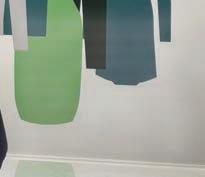

Are you nuts to wanna be a drycleaning owner!?”
This and other exclamations aside, owning a drycleaning operation, as many surely know, takes, at times, a combination of a keen business acumen, a gambler’s winning swagger, and a roll-up-your-sleeves gutsy style.
But what about the newcomer? The first-time buyer? Or the first-time expanding operations? What solid advice can we impart to them regarding making a purchase in dry cleaning?
Two drycleaning owners, both as it happens from Texas, share their insights on buying a dry cleaner.
“For a new buyer entering into the industry, first and foremost I would advise you to work for a friend, or someone you know in the industry for a minimum of six months to understand the nature of the business before you invest a fortune. Understand the pros and cons of the business and, importantly, understand completely the risk with your investment.”
That’s Rahim Maknojia. His brother and he own Oaks Cleaners located in Houston. Twenty years in dry cleaning, he overseas the entire operation and manages 30 full-time employees, including routes. He says they work with elite Houstonians and specialize in handling boutique and high-end clothing.

Maknojia,
Cleaners, stands near the front of his drycleaning operation. Tip to a potential buyer: “I would advise someone planning to buy, to talk to a dry cleaner who has made the recent transaction either buying or selling.” (Photo: Oaks Cleaners)
“In my opinion, although you might have to pay premium for acquiring an existing business, I would rather buy that type of business to mitigate the risk, where there is a proven track-record of data with profits and loss,” Maknojia says.
“I would advise someone planning to buy, to talk to a dry cleaner who has made the recent transaction either buying or selling.
“Also, identify a realtor who specializes and focused mainly in drycleaning transactions and seek advice from an experienced attorney,” he adds.
Buying tips include not just personal experience but finding professional connections.
Maknojia: “I highly advise a buyer to hire a drycleaning consultant who can introduce you to operators in your network, as they will be more comfortable sharing the information through a personal reference. This could be the best way to learn from an experienced owner and operator to determine the worth of business as well as the dynamics of the business.”
He says that in his personal experience: “I always believe in quality and not quantity. When I entered in the business, my rent was way more than 12%-15% which is what industry recommends. But as you know, you get what you pay for. (continued on page 10)

‘To-Dos’ from two drycleaning owners before making that purchaseRahim co-owner of Houston-based Oaks




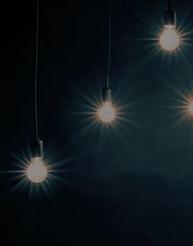



























“It was all about the location, for me, and my operation is surrounded by sophisticated clients who believe in ser vice and high quality.
“Therefore, if you have a drive for quality rather then quantity, I feel you should go for the better market, even if you have to pay higher rent. In return, you can charge a little more than the average cleaner would.
“It wasn’t an easy decision years ago, but with all the due diligence, today, I am operating a successful business, even though I paid high-dollar rent. Today my rent is way below industry recommendation,” Maknojia notes.
What if you’re thinking of buying a plant vs. drop station?
“My advice is, buy a plant. I would never invest in a pickup station only and rely on someone else to produce a quality product, which is near impossible in this business as you know,” Maknojia feels.
“In our industry, we sell only two things: service and quality. They both go hand-in-hand, therefore you must excel at both, or you may not be able to survive for too long,” he says.
For existing operators he says this:
“If you wish to expand there are many ways, but in my opinion the best way to go about expanding is to start a route. There is absolutely no reason not to offer this ser vices, as we are accustomed to Amazon, and to free home delivery services like groceries, or having prescriptions delivered to our door steps free of charge. Why not dry cleaning?
“In my opinion, those who don’t offer free pickup and deliv ery services may not be able to grow and sustain for long.
“Lastly,” Maknojia reminds, “invest in technology and human resources, it’s a no brainer.”
Those how-to ‘to-dos’ speak to preparing to buy, but what about going through the actual act of buying a dry cleaner. Let’s hear from our next Texas tipster on actually acquiring a business.
“Here are the things I learned from doing 10 acquisi tions: If you think you are up for an acquisition, check with your closest advisors: your lawyer, CPA, partner, spouse, smart friend with a successful business. Ask them what they think about the strategy for your business.
“Are you the right kind of person to pull it off? Have you done anything like this in a while? Talk to a reputable
broker in your area or in the drycleaning industry. Get a feel for the acquisition process as well.”

This is John Palms, president, CEO, Bibbentuckers LLC, Dallas, a business started in 1996 by several execu tives with Exxon.
“They acquired leases on the best corners in Dallas, mostly on Preston Road,” Palms says.
“These stores were also plants with 4,000-5,000 sq. ft., and they ran the first delivery routes, up to 11 now, out into their respective neighborhoods.
“Dallas sales are eight figures and half of them are free delivery. Each store/plant has approximately 30-35 em ployees,” Palms explains.
He shares in detail how the acquisition happened:
“In 2006, I met with well-known drycleaning industry consultant, Richard Ehrenreich. I received excellent ad vice on how to buy a dry cleaner, along with a comprehen sive baseline business plan format,” he notes.
Palms relates that he found Bibbentuckers’ president Randy Bishop through various contacts in Dallas.
“We met numerous times, discussing the business mod el and growth plan. I was intrigued by what I heard. I saw a long runway for the firm, so I asked if the company had considered selling? The answer was: ‘no but I will run it by the board.’ Weeks later I got a call from Randy indicat ing the board would consider selling for the right price.”
Palms explains further: “With the help from a seasoned business partner, in the area of mergers and acquisitions, we submitted an acceptable Letter of Intent, known as an LOI, drafted a Private Placement Memorandum, called a PPM, to raise the capital and secure the bank loan.
“The acquisition of the business occurred within threeto six months,” Palms says.
“Our strategic plan was to grow organically by acquisi tions in all four major cities: Dallas, Austin, Houston, and San Antonio,” he notes, adding, “I had just helped finish a four-year turnaround with a Fla.-based manufacturing company and was ready for the next challenge!”
Palms relates: “We did a reorganization with Bibben tuckers corporate staff and changed one of the store man agers to district manager overseeing three stores, a plant, and two drop stores. We also eliminated a route manager, having route drivers report directly to their store GMs.”
You can encounter “gotchas” when buy (continued)








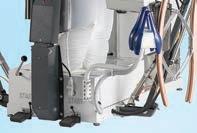









ing a business. Take note of these tips.
“There are many good professionals in and around our industry,” says John Palms, “who can provide advice and counsel. Your lawyer, CPA, and bookkeeper should be able to keep you out of the weeds, and help you make good decisions.”
He shares what he’s learned from all his acquisitions, including Bibbentuckers.
Palms says, “One of the most important buying ‘criteria’ to start with is the acquisition’s price list. If it is within 10% of yours, great.
“But, if it’s 20% lower, that can be a problem. Even if you ratchet-up the candidate’s pricing, you are still increas ing your existing pricing 3-5% once a year minimum.”
In summary, he notes, if you are a high-end cleaner, look for high-end targets. If mid-market or a discount cleaner, look for those that are similar.
“You want to buy revenue and profit at the lowest cost possible,” Palms indicates. “This might mean buying a route or drop store and integrating it into your existing plant. Try to avoid buying plants, if possible, and termi nate the lease and move the production to your existing plant, if you have capacity.”
If you have the option to buy the plant property vs. extending your existing lease, Palms says, “look hard at buying the target property. Being a commercial real estate landlord provides one of the highest investment returns in business.”
More how-to tips for the buyer: “Local commercial real estate companies can provide a decent ‘drive-by’ valuation of the property,” Palms relates.
“If it’s close to what the seller wants, make an offer. See if the seller would take a note or even partial. Same for the business itself.”
He also reminds you to talk to your banker and find out what he or she needs to underwrite a target acquisition, such as the latest financials and tax returns of the business and owner; latest financials and tax returns of the target ac quisition; executed Letter of Intent and/or Asset Purchase Agreement.
How do you value a typical dry cleaner?

The industry standard, Palms says, uses a formula of three-to-five times the 12 months trailing, owner discre tionary income, or EBITDA (means Earnings Before Inter est, Taxes, Depreciation, and Amortization) with owner add-backs.
“A three-to-five time range depends on the quality of the assets. Good is a three and great is a five. Some large or fast-growing EBITDA could be a six to seven multiple.
“Your bank will require an appraisal of the business. You can also hire a ‘valuation consultant’ to give you a preliminary valuation on your business. There are several that specialize in the drycleaning industry.
“Maybe the valuation is less than you thought and, there fore, worth keeping around as a fairly dependable revenue stream for several more years,” Palms notes.
Due diligence is a critical phase of the acquisition and the closing. “It can cover items such as employee and cus tomer contracts, evaluation of equipment, computers, ve hicles, and building finish-out,” Palms says. “If your seller has leases with landlords beware of the terms, renewals, and assignments. Your lawyer should review these for you.
“The bank will require environmental reports on all properties that have dry cleaning, or may have in the past,” he explains. “If you are buying the property through an other entity, such as an LLC, you will need environmental reports just the same.”
Make sure the business has no pending lawsuits. “Check all federal, local, payroll and franchise taxes are paid and current,” Palms reminds, and says, “Run background checks on all key personnel. You can decide who.”
He also advises a buyer to, “Have your bookkeeper and your CPA help you draft a pro forma, also called a forecast, on the business looking out three years. These numbers will be as if you are owning and running the business, not the seller. Remember, you may have healthcare benefits the seller does not!
“Your bank will also want to see this pro forma. Make sure you footnote the projections and assumptions. It cer tainly helps minimize the surprises,” Palms says.
To all potential drycleaning owners, Palms concludes: “Good luck and remember … the devil is, indeed, in the details!”
Both of our Texas drycleaning owners have shared valu able how-to tips for those looking to buy new or expand with acquisitions.
You’re not nuts to want to be a drycleaning owner. You’re heading into an exciting, profitable industry.
Take their advice, learn the business, and talk to the key people they recommended. Before you know it, one day soon, you’ll be the one giving the “To-Dos” on how to buy a dry cleaner!


Eats ’n’ Beats: Locals share their favorite food places, music clubs, and watering holes in and around New Orleans, as we get ready to rock the Clean Show, June 20-23.
Also:





• So many ways to get around in the Crescent City; and how to get to and from the airport.
• Tips to keep comfy at the show and in the steam-heat of summertime New Orleans this June.

• Festivals, outings, shopping, things to do off the beaten path, and more in and around the city.

drink
New Orleans’
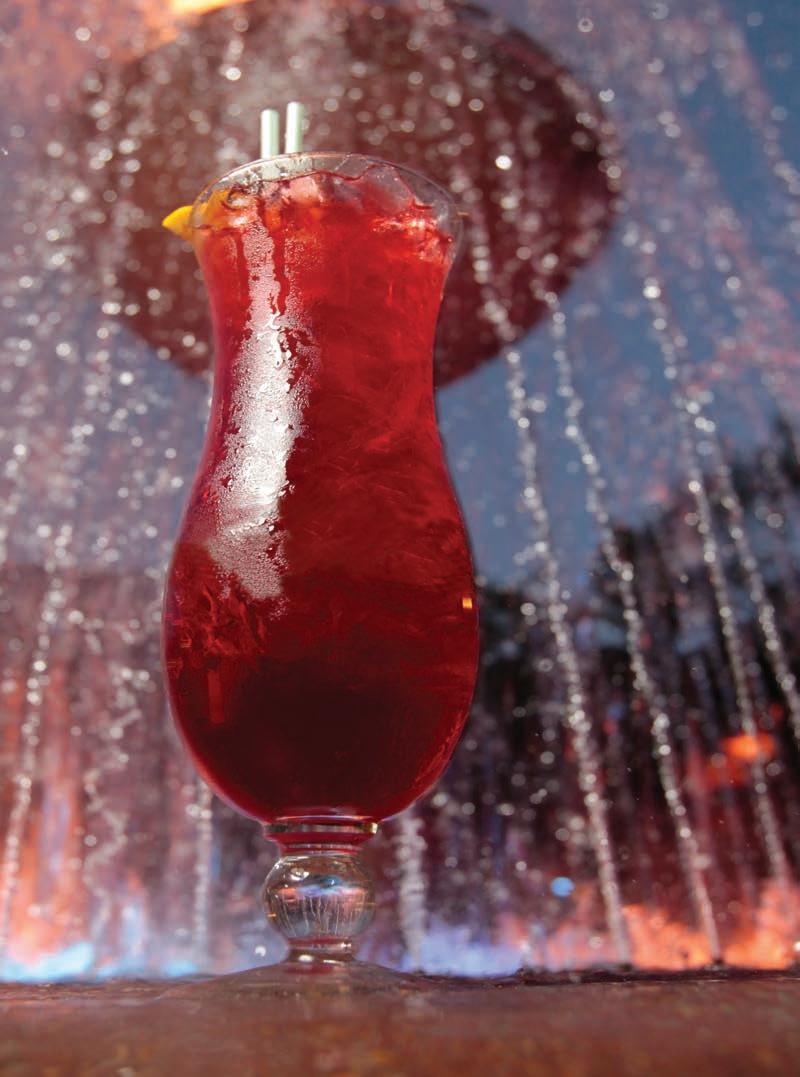
Clean ’19 and New Orleans are gonna Rock you like a Hurricane ... and yes, we mean the drink too!
New Orleans invented the cocktail, they say.
There are more than 1,400 places to eat, drink, and be merry, they tell.
The party never seems to stop here.
Some names you’ll recognize in New Orleans include: The French Quarter, Bourbon Street, Pat O’Brien’s (their Hurricane drink is on the front cover), and Café Du Monde.
While the Clean Show 2019 is happening in the Ernest Morial Convention Center, Thursday through Sunday, June 20-23, we’re offering you some peeks at local spots you might want to check out on your off hours. It’s not 1,400 places, but it is a bunch! Here comes our Go Guide.
For this first portion of the Go Guide that we’re calling Eats ‘n’ Beats, we’ve called upon two locals to help you rock on over to the “in” places to carouse around the Crescent City, named for the way the Mississippi River bends.
Helping us out, and graciously serving as your tour guides, are Alyssa Kelly and friends at Milnor, which is located in nearby Kenner, Louisiana; and Andree Bauer, co-owner with her brother Eric, of family-owned Russell’s Cleaning, a well-know cleaner right here in New Orleans.
They are going to take you on a New Orleans insider’s guide to their own favorite, coolest, most fun, best places
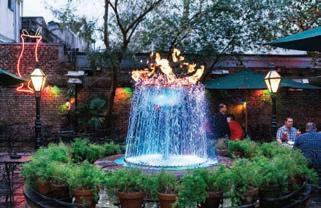
to get your Clean ’19 groove on! (When you’re done perusing the Clean Show, that is.)
Get ready now to sample New Orleans’ hot spots, as recommended by locals, in Eats ‘n’ Beats....
Alyssa Kelly and friends at Milnor list some of their favorite places to eat and drink in New Orleans, and they also provide the websites for those picks, and add some of their own tips.

• Jacques Imo’s www.jacques-imos.com Alyssa sez: “No reservations unless 5+ people.”
• Paladar 511 www.paladar511.com
511 Marigny St. Open evenings and weekend brunch.
• Muriel’s Jackson Square www.muriels.com Alyssa sez: “Recommend shrimp and goat cheese crepes.”
• Johnny Sanchez Inventive Mexican eats and drinks. www.johnnysanchezrestaurant.com Alyssa sez: “Try the cauliflower taco.”
• Juan’s Flying Burrito Creole-tinged Tex-Mex. www.juansflyingburrito.com/ Alyssa sez: “We recommend the pork and slaw tacos. Excellent frozen margaritas.”
• Bacchanal Wine www.bacchanalwine.com/ Alyssa sez: “Purchase wine from their store, create your own cheese plate, listen to music in their backyard.”
• Manolito www.manolitonola.com/menu/
Alyssa sez: “Sip the frozen strawberry daiquiri. It’s no longer on the menu, but I bet they’d still make it!”
• Urban South Brewery www.urbansouthbrewery.com/
• Carousel Bar New Orleans’ only revolving bar. www.hotelmonteleone.com/entertainment/carousel-bar/
• Hansen’s Sno Bliz Snowballs www.snobliz.com/
Alyssa sez: “Great for hot June weather!”
Alyssa Kelly and friends at Milnor also list some of their favorite activities in New Orleans:


• Blue Bikes www.bluebikesnola.com/
• Fulton Alley Bowling www.fultonalley.com/
• New Orleans Museum of Art Sculpture Garden www.noma.org/sculpture-garden/background/
• Cajun Encounters Swamp Tour www.cajunencounters.com/
Alyssa sez: “It’s in Slidell, but they offer shuttles from downtown.”
• New Orleans Historic Voodoo Museum www.voodoomuseum.com/
• Frenchmen Street www.frenchmenstreetlive.com
Andree Bauer, co-owner with her brother Eric, of family-owned Russell’s Cleaning, here in New Orleans, lists her favorite restaurants, sweet treats, music clubs, bars, and things to do. She also includes websites along with her thoughts. “These are several of my favorites around town,” she says.
• Liuzza’s (Mid City area) www.liuzzas.com
Andree sez: “Family owned, local favorite!!”
• Station 6 (Lakefront area) www.station6nola.com
Andree sez: “Family owned, good oysters!”
• Marcello’s (CBD) www.marcelloscafe.com
Andree sez: “Italian, good wine prices.”
• Borgne (CBD) www.borgnerestaurant.com
Andree sez: “Seafood, great happy hour, good oysters.”
• La Crepe Nanou (Uptown) www.lacrepenanou.com
Andree sez: “French; need reservations.”
• Jacques Imo’s (Uptown)
Andree sez: “Unique New Orleans style; usually a line, try off times.”
• LA Pizza Kitchen (Uptown on streetcar line)
Andree sez: “Their second location in the French Quarter is Italian and has a wood-burning oven pizza.”
• El Gato Negro (Lakeview) www.elgatonegronola.com
Andree sez: “Upscale Mexican with two locations. The best is 300 Harrison Ave. Great margaritas, outdoor seating. The second location is in the French Quarter.”
S WEETS:
• Brocato’s (Mid City) www.angelobrocatoicecream.com
• New Orleans Cake Cafe and Bakery (Bywater) www.nolacakes.com
American Drycleaner, April 2019 www.americandrycleaner.com











 Visit us at Clean 2019, Booth 2657
Visit us at Clean 2019, Booth 2657
Andree sez: “Breakfast and lunch, home-made pastries, cupcakes; expect a line unless early.”
MUSIC C LUBS:
• DBA (Bywater) www.dbaneworleans.com
Andree sez: “Early (6 p.m.) and late shows.”
• Chickie Wah Wah (Mid City) www.chickiewahwah.com
Andree sez: “Early (8 p.m.) shows.”
B ARS:
• Bayou Beer Garden (Mid City) www.bayoubeergarden.com
Andree sez: “Outdoor seating.”
• Bayou Wine Garden (Mid City) www.bayouwinegarden.com
Andree sez: “Outdoor seating. Patios back-up to each other.... large outdoor space, good food at both, wine bar has great happy hour and more upscale food items.”
• The Delachaise (Uptown on street car line) www.thedelachaise.com
Andree sez: “Wine bar.”
• Lafitte’s Blacksmith Shop (French Quarter) www.lafittesblacksmithshop.com
Andree sez: “Historical, oldest bar in the USA, and named after pirate Jean Lafitte!”
Looking for more things to do in New Orleans? Why not just get out and walk the city and follow your ears to the sweet jazz music on the streets? Local traveler tip: The June summer weather will be warm so drink water and dress light, but don’t forget to carry an extra layer around to put on when you step inside a bar or restaurant; you’ll experience “arctic” air-conditioning. (Photo by Richard Nowitz courtesy of New Orleans Convention and Visitors Bureau)

• Two chicks walking tours www.twochickswalkingtours.com
Andree sez: “Several walking tours available, will customize private tours by request.”
• New Orleans Historical Collection (French Quarter) www.hnoc.org
Andree sez: “Interesting collections, nice courtyard, music events sometimes.”
• Audubon Zoo (uptown) and Aquarium (French Quarter) www.audubonnatureinstitute.org
Andree sez: “Both excellent.”
• New Orleans Jazz Museum (French Quarter) www.nolajazzmuseum.org
Andree sez: “Several interesting varying exhibits of local talent.”
Why not try biking around the Crescent City while in New Orleans for the Clean Show? This is known as the Crescent City Connection bridge! A local guide says, “The best place to photograph this bridge is actually from the Mississippi River Trail at a spot just northeast from this bridge’s marker.” (Photo by Zack Smith courtesy of New Orleans Convention and Visitors Bureau)

Those are some of the things to see and do in and around New Orleans from our local tour guides, Alyssa and Andree. Thank you both for sharing your favorite places to eat, drink, listen to music, try sweets, and check stuff out. Clean ’19 will have your attention, but so will the city of New Orleans!
www.americandrycleaner.com
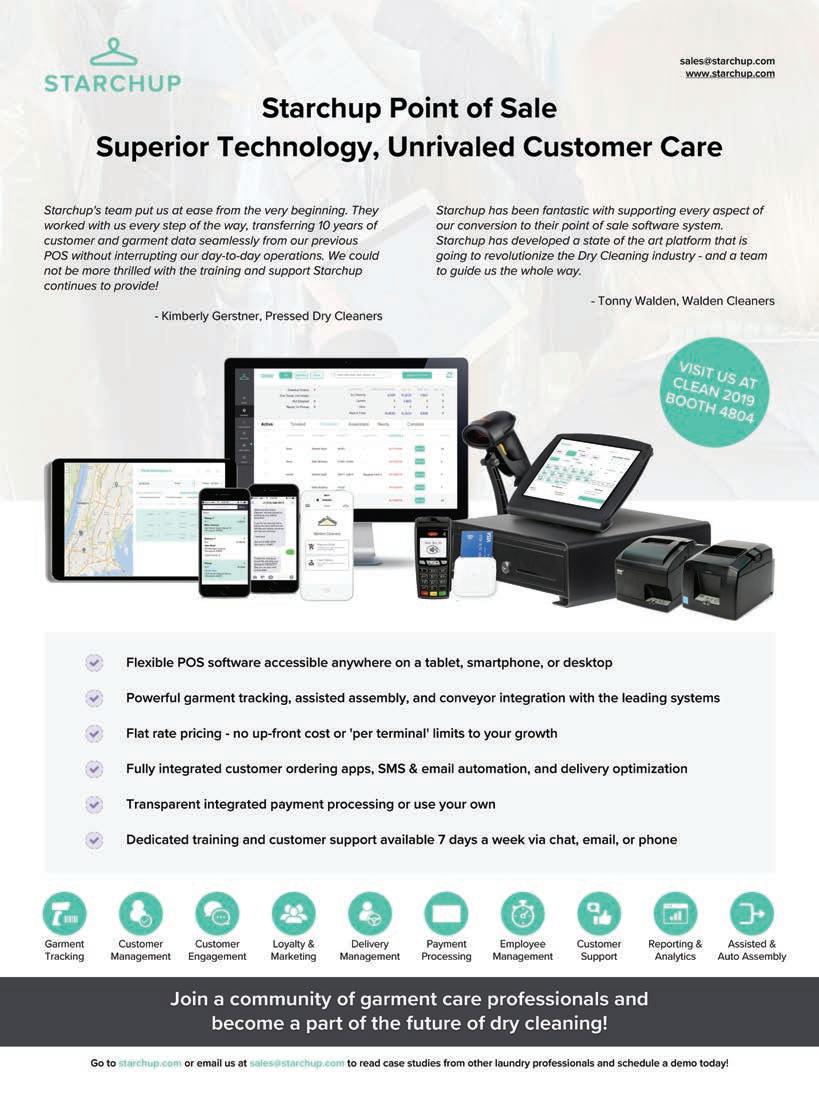
You’ve landed at the New Orleans airport to attend Clean ’19. Welcome! Let’s get you to your hotel: Hitting Town! The first order of business is getting Clean ’19 Show attendees from the Louis Armstrong New Orleans International airport to their hotels. (FYI: The website www.cleanshow.com provides a big list of many hotels.) Attendees can catch a taxi to their hotel or take a shuttle.
About taxicabs from the airport, from the website www.neworleans.com: “There is a cab stand right outside of the airport. Cab fares are $33 each way for one or two people. Three people or more are $14 each. There is a $1 per bag fee. This fare is good from the airport to anywhere in the city of New Orleans. It’s regulated by the city but is subject to change.”
About airport shuttle service, from neworleans.com: “Airport Shuttle service is available to and from Downtown and Uptown New Orleans hotels, the French Quarter, the Ernest N. Morial Convention Center and the

Cruise Ship Terminals.”
“Look for the Airport Shuttle parked in front of your hotel/departure location approximately 5 to 7 minutes before scheduled departure time.
“Shuttles run every day of the year, with vans departing approximately every 30 minutes. (Except between 2 and 3:30 a.m.)
“You can purchase ticket(s) at www.airportshuttleneworleans.com or in person at the Airport Shuttle Ticket Desk, located on the ground level of the airport across from the baggage claim area, or you can make a reservation by calling 866-596-2699. They accept VISA, MasterCard, American Express and Discover (and cash if you’re paying in person at the airport location). If you’re purchasing your ticket(s) at the airport, please claim your luggage first.”
“Shuttle cost: $24 one-way, $44 round trip for adults and children 6 and older. Children under 6 ride free (subject to change).”

In 1999, three dry cleaners, Jim Douglas, Jim Barry, and Ron Benjamin, founded GreenEarth Cleaning to provide an alternative to perc. Now, after 20 years, GreenEarth has evolved into a process that is recognized by landlords, garment manufacturers, insurance companies, regulators, and consumers as the most sustainable way to care for fabric. Our sincere thanks go to our GreenEarth Members worldwide, who daily provide their customers with quality service and the planet, its people, and their business with the care they each deserve.
In 1999, three dry cleaners, Jim Douglas, Jim Barry, and Ron Benjamin, founded GreenEarth Cleaning to provide an alternative to perc. Now, after 20 years, GreenEarth has evolved into a process that is recognized by landlords, garment manufacturers, insurance companies, regulators, and consumers as the most sustainable way to care for fabric. Our sincere thanks go to our GreenEarth Members worldwide, who daily provide their customers with quality service and the planet, its people, and their business with the care they each deserve.









Once in the city, you may find walking to be the best way to get around in this “big little city.” If you’d rather ride, you can get aboard a carriage, streetcar, pedicab, or call a taxi.
Horse-drawn carriages, neworleans.com says, “Were the original ride share and the chief way folks traversed the city’s unpaved streets and byways. Muledrawn carriages still line up on the Decatur side of Jackson Square, offering leisurely city tours, filled with colorful commentary. Carriages can also be hired for groups and special events, a mode of transportation that always makes a memorable impression.”
Streetcars, from neworleans.com: “If you’re staying in the French Quarter, Downtown or in the Arts/Warehouse District, you may never need to hire transportation of any kind - you may be able to walk to all of your destinations. Still, New Orleans’ streetcar system is a charming way to explore the city, and you can easily rent bikes, hop a bus, take a ferry, or call a pedicab, a taxi or a limo service whenever you need to.”
About New Orleans streetcars, the website says: “Streetcars are a charming and convenient way to experience the many areas of New Orleans. Four distinct lines, each originating Downtown, will take you through the French Quarter and beyond to places you might not otherwise get to see.
Pedicabs are a handy and convenient way to get around New Orleans, as this mom and daughter are doing and having fun too. (Photo by Zach Smith courtesy of New Orleans Convention and Visitors Bureau)

“Streetcars fare is $1.25 and must be paid with exact change when you board. One, three, and 31-day unlimited ride Jazzy Passes are also available for $3, $9 and $55 respectively.

“See the Regional Transit Authority (RTA)’s website for a list of places to purchase these as well as information about wheelchair accessibility. You can also download the RTA gomobile app and pay your fare instantly from your phone.”
Maybe you want to jump in a “pedicab” and get around by pedal power from a driver bicycling you to your destination.
Pedicabs, neworleans.com says: “All pedicab drivers are licensed by the city. They operate primarily along the Canal Street downtown corridor and in the French Quarter and nearby Faubourg Marigny and Garden District neighborhoods. They have a maximum capacity of two persons per vehicle.
“Retractable, convertible-style canvas roofs offer protection from rain or sun. The rates per pedicab ride are $5 for the first six blocks and $1 per block per person after that. Prices are subject to change.
“Pedicabs generally operate from the early morning hours until midnight on weekdays and later on weekend nights.”
Streetcars are not only a good way to sightsee, but can be a fun way for Clean Show attendees to “go to work” to and from the convention centerin Crescent City style! (Photo by Chris Granger courtesy of New Orleans Convention and Visitors Bureau)








It’s hot in June, be comfortable! We’ve put together some tips to make your Clean ’19 experience positive and rewarding, all the way from “Clean” street to Bourbon Street, and the French Quarter.
For the Clean Show, the usual tips are pretty obvious. Have comfortable footwear. Don’t forget to take an occasional break to give your feet a rest as you walk the aisles of Clean ’19. (It’s always about the feet, isn’t it!?)
As Riddle & Associates always says, stay cool during the high heat of the day and stay on the exhibit floor, saving the city adventures for evening. Also, don’t forget bottled water to stay hydrated. For around the town there are some other ideas to keep in mind.
According to the website tripsavvy.com here are some tips for traveling to New Orleans in June:

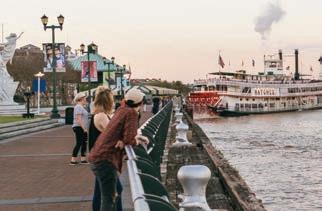
“You’re going to want clothes in lightweight, comfortable, breathable fabrics for daytime. Think sundresses, shorts and t-shirts, linen slacks, and if you really want to dress up for an occasion (such as lunch at formal Antoine’s), perhaps an iconic seersucker suit.
“If you plan on doing anything outside during the day, a hat with a brim is pretty important, and comfortable shoes for walking are always necessary. Sunscreen and
bug spray are essential, though you can always snag them when you arrive.
“Because of the heat, restaurants, shops, and hotels tend to prefer their air conditioners set to Arctic, if not a bit colder. If you’re going to be inside at any point, bring a layer (a light shawl, cardigan, or jacket does the trick), because the contrast can be shocking.”
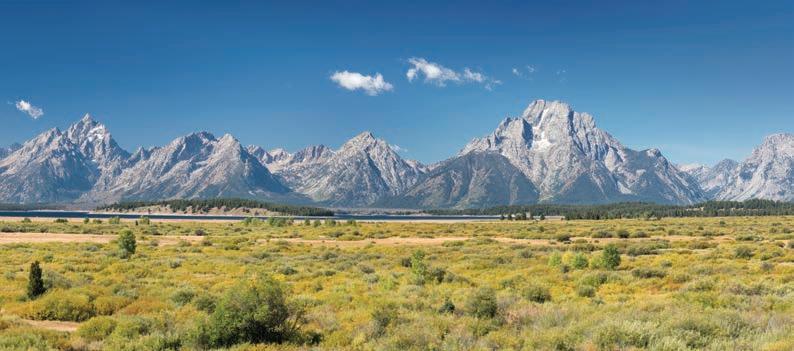


















tours, and more. You can find more information from checking out a guide book at your library, going to one of the many websites about New Orleans, or asking when you arrive at your hotel for more day trip offerings.
There are riverboat tours on the Mississippi River. This from neworleans.com:
“Mark Twain said that the Mississippi River was a wonderful book with a new story to tell every day. Mississippi, a Chippewa Indian word that means “large river” is the life force that has shaped New Orleans history forever, defining and literally shaping the city into its famous Crescent outline.
“The best way to see what Mark Twain was talking about is to take a paddleboat tour along the hard working river, and travel back to the days when steam-driven river paddle wheelers were the main source of both transportation and commerce. Boat tours leave regularly from the riverfront area adjacent to Woldenberg Park, some offering music and meals, all offering cocktails and narration. So hop aboard one of these.”
Lots to do … and see … and experience! More things to check out while enjoying New Orleans during Clean ’19, including some of the fests going on, some of the excursions, some of the shopping, and a couple “off the beaten path” ideas.
It’s a city of parties, music, and fests, and you can probably follow your ears down a street in the French Quarter or to the riverfront and find a fest. But one wellknown festival happening on the same weekend as the Clean Show, is the Cajun-Zydeco Festival, June 22-23.

This from neworleans.com: “Cajun music and its hybrid offspring, Zydeco, is celebrated every year in June at the Louisiana Cajun-Zydeco Festival. This free celebration is held in Armstrong Park, located on North Rampart Street in Treme. There are two stages, delicious seafood, and a crafts fair, making the festival a celebration of dancing and joy.”
New Orleans has all sorts of tours: from culinary tours and French Quarter tours to plantation tours, haunted

There are also horse and carriage tours, night tours, and there are airboat tours which will take you into the mysterious swamps and bayous of Louisiana only a half hour away.
(continued on page 48)

At the heart of SMRT, we are a dry cleaner. It’s the reason we created our software in the first place: To solve the everyday problems we ran into at our own business.
We’ve stood in your shoes -- pressing, cleaning the button trap, filling in when the driver is sick, making payroll, and replacing equipment.
And with a dry cleaner’s perspective, we’ve built, from the ground up, the best dry cleaning software in the marketplace.
We understand that dry cleaners are dynamic, high-performing entrepreneurs. It’s no small feat to run both the factory and the dealership every damn day. You deserve a software partner that knows your business and is there for you 24/7. You deserve SMRT.


Next-level customer service to match their next-level technology. The SMRT team is passionate about solving problems and supporting their users.
Jason Yerby
Vice President: Crest Advanced Dry Cleaners
There’s more to SMRT than great software. They really know the business, bringing a new dimension to customer support.
Daniel Cha
Owner: Orchid Dry Cleaners
SMRT is light years ahead of the competition! We’ve never been so on top of our business and in tune with our customers.
Wayne Edelman
Owner: Meurice Garment Care
Robust
Richard Aviles
Owner: Bridge Cleaners & Tailors, King Garment Care
The Clean Show is valuable to your business ... and it’s fun
Question 1: The Clean Show is getting closer, are you planning to go?
Answer: If you are, great. If you haven’t yet decided, you should consider attending — and start planning. Planning increases the likelihood of implementation and reduces the chances of last-minute distractions that interfere with actually making the trip.
Question 2: Why should I spend the time and money to attend if I don’t need any equipment?
Answer: Seeing new equipment is just one benefit of attendance. Even if you don’t need anything, keeping current on industry advancements, and networking with experts and peers, keeps you aware of opportunities and alternatives.
Not only is Clean Show involvement a benefit for owners, it can be a powerful incentive and morale boost for key staff as well.
To stay informed and current on best practices, seeing is believing. The Clean Show is the most efficient and concentrated presentation of where the industry is going and how best to get there.
Even if your equipment inventory meets all of your current needs, there may be a better, faster, cheaper way to improve a process. Exposure to alternatives keeps your operation sharp and efficient.
Shows provide demonstrations of the alternatives so that when the time comes to make a change, you will be aware of the choices and in the position to choose wisely with confidence that you are making the best decision for your operation.
Comparing alternatives to the process now used in your operation also keeps your management skills sharp.
Running a return-on-investment (ROI) calculation on any change that might improve efficiency or effectiveness keeps your thought processes sharp and opens your
mind to better alternatives. These ROI calculations may surprise you with their contribution to the bottom line.
Delegating ROI calculations to managers can get them on-board for making improvements instead of resisting change, which is human nature when decisions are all top-down. Many alternatives can be completed without capital investment, but there is still a cost to cover planning, training and change implementation.
Determining that you don’t need new equipment is no reason to avoid trade shows. They represent a gold mine in many other ways in addition to exposure to the latest machines being offered in the industry.
Before you reject the idea of attending the 2019 Clean Show “because you don’t need anything,” remember that you and your team can benefit by witnessing trends and improvements in all the ancillary products and services, such as chemicals, packaging, software, marketing, safety gear, human resources, productivity, and improved bottom-line profit.

Your Team: In this ultra-competitive hiring and retention market, good employees are being bombarded with alluring offers. Treating selected team members to a professional visit to a trade show in an attractive locale can build their loyalty to you and give them better skills at the same time.
A more informed, more effective team will benefit you exponentially, as the owner, allowing

you to delegate to better skilled and informed players.
Show attendance can also be a reward to them for a job well done, so present it as a privilege to be earned and valued.
Your Current Suppliers: How often do you get the opportunity to meet face-to-face with the decision-makers at your vendor companies?
The Clean Show gives you a chance to make an impression on a supplier that might take your business for granted or whose service has slipped. It is also a time to thank the dealers that have gone the extra mile on service and/or product development.
By introducing your team to the vendor team, you are strengthening the relationship on both sides and allowing them to attach a face to a name, so the bond becomes more personal providing motivation to say yes when you need special attention.
Each participant makes a significant investment of time, energy, personnel, and money. To be represented, and showing your appreciation of their efforts by participating, is valuable for your continuing education and service relationship. It keeps you top-of-mind for innova tion and feedback.
New Relationship Building: Introduce yourself and personally get to know a broad range of industry providers and experts so you can freely network and acquire/ share valuable information.
The concentration of expertise at this world-renowned trade show is impressive and it opens the way for preferential access in the future when you do want to make a capital investment or need expert advice.
Industry influencers and experienced operators who are visible and accessible stay in the forefront of awareness and first in line for attention.
Ongoing Peer Relationships: The Clean Show this June is an opportunity to renew and strengthen peer connections whether it has been years between the last contact or mere days.
Catching-up with each other, personally and professionally, provides a wealth of guidance and support for any issue that may arise in the future. It gives you the confidence to make the call to a supportive friend. The show creates a natural environment for easy sharing of expertise.
Having a dynamic, involved, informed group of peers to call on for best ideas, such as, what didn’t work and why; best practices; advice; and information of all kinds,
is a tremendously valuable resource that is not related to the latest exhibitor offerings for your operations.
Trade shows and industry interaction helps overcome the potential lack of knowledge and management challenges that are often inherent in the isolated middle management role as well. Let your team meet their peers.
The more one is willing to share expertise, the more they receive in return for their efforts at networking.
Each attendee will benefit from listing their primary and secondary goals for the trip.
Goal-setting will focus the scheduling, and help prioritize the appointments to be efficient and on-topic.
Micro-manage each day. Then the desired people, resources, presentations, education sessions and informal meetings can be slotted appropriately. Time flies! So it must be allocated wisely!
Prepare with a map of the exhibits, a schedule of the educational sessions and a list of industry leaders to meet, so your itinerary can be designed well in advance to accommodate all the exhibits, events, meetings, educational sessions, appointments and socializing that make this trade show so important.
Contacting your desired appointments early ensures that you and they set aside sufficient time in busy schedules to address the items of interest.
Formal Education Sessions: The educational sessions address the many challenges faced by the industry today. Allocate enough time to attend all the relevant educational sessions for yourself and for your accompanying team members.
Informal Education Sessions: Set aside time to spend with industry leaders, such as operators, suppliers, and consultants. Trade shows are a good opportunity to schedule a time to meet these operators and discuss details of how they implement their current systems.
The Clean Show is fun, educational, invigorating, and valuable to your business. Clean ’19 New Orleans awaits. See you there! ADC
Diana Vollmer is a managing director for Methods for Management, which has served dry cleaners and launderers with affordable manage ment expertise and improved profitability since 1953. For assistance brainstorming how to plan and leverage your 2019 Clean Show visit, contact her at dvollmer@mfmi.com or call 415-577-6544.








We were recently fortunate enough to host a conference for other cleaners around the U.S. at our Minneapolis cleaning lab. During our meetings one of the topics that came up repeatedly was culture.
Over and over the question was asked, “How do we as owners build a culture among our staff that lasts long after we go home for the day.”
In talking with other owners one thing that was both surprising and encouraging was how clear most owners were about the type of culture they wanted. The desired cultures varied dramatically from top-down military-like hierarchies to competitive sales-driven teams to employee-ownership cultures.


While we all knew what we wanted, we quickly realized that much of it was in our mind, and had not been shared with our staff in a meaningful, ongoing way. What became clear to all of us in those meetings is that we needed to start living our culture out loud.
What do I mean by living our culture out loud?
I mean integrating your culture in every person, place and activity in your business, so that it’s not just an ephemeral concept in your mind, but a concrete set of symbols, values, language, and actions that every person at your company understands and buys into.
I can imagine that many of you might be rolling your eyes right now, saying, “Dan, I would love to spend time on my company culture, but I’ve got more important things to do right now like get these last few orders out the door.”
Believe me I get it. I’ve been there where you are so buried in the immediate you forget the important.
However, I promise you that if you take the extra time to build your culture, then you won’t have the immediate problems to worry about because your team will have solved them long before they get to you.
To effectively begin living your culture out loud you
need to first define what your culture is going to be. I like to think of culture as having four main things:
What is your company’s ultimate goal? To be the highest rated dry cleaner in Denver? To make $100,000 per year? To be the largest company in the world? Whatever the answer, you and your team need to be aware of it and in agreement that that is what you’re trying to pursue.
What are the values that will guide you in your quest to reach your goal? Are you about speed and competition? Honesty and quality? Let whatever you choose to emphasize with your staff, guide their behavior.
How will you measure your success? The metrics that you choose to measure say as much about your culture as your mission and values. For example, if all you measure everyday is the piece count, but your number one value is quality, what does that say about your commitment to your values.
People respond to symbols as much as they do to words. What are the symbols of your culture? In the U.S. we have amazing cultural symbols nearly every American understands, from the American Flag, to the bald eagle, to the Constitution. What symbols can your staff rely on when they think of what your culture means? One
“Poseidon allows us to wet clean challenging garments like wool suits and wedding gowns without worry. It allows me complete control over my equipment and my destiny.”
– Paul White, Lifestyle Garment Care






Increase your percentage of wet cleaned garments while dramatically boosting plant production and reducing overhead costs. Thanks to Poseidon, you can safely wet clean, dry and finish even the most delicate fabrics at a fraction of the cost of dry cleaning.

POSEIDON — ECO-FRIENDLY, AFFORDABLE, PRODUCTIVE.

poseidonwetcleaning.com • 800-482-3400


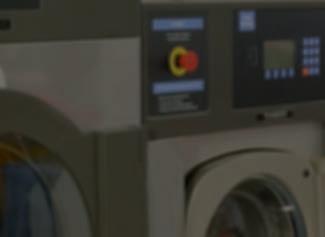
big symbol is our wood hangers, because we believe it symbolizes a higher-level drycleaning experience.

Of course, many companies have defined their culture in a strategic planning exercise. They have their mission statement and values written in a document somewhere. But, that’s normally where culture falls down. Because it isn’t enough to decided on key components of your culture, you have to bring them to life in every touch point.
While there are countless different ways to do this, there is one simple exercise that I would highly recommend. Walk yourself through the journey of both a customer and your employees and ask yourself at each touch point, “Do I see a symbol or piece of their culture?”
For example, at our stores, we tell every interview candidate about our mission and values. Every store has our values posted behind the front counter. Our cleaning lab has the values posted in the main production facility and the break room. All of this is designed to ensure that
every person that interacts with us has a firm understanding of our culture and what we’re trying to achieve.
However, signs and symbols aren’t enough to drive the culture. It’s on an owner to verbalize the values every day. When you give performance management feedback, tie both positive performance and opportunities for improvement back to the core values of the company. When you give a presentation, include a slide on your values just to reaffirm their importance in every discussion. When you train or give professional development, make your culture the beginning of every section.
If you begin living your culture out loud you can take your culture from being an idea in your mind to being a living, breathing organism that drives your company to new heights!
ADC
Dan Miller is the chief executive officer of Mulberrys Garment Care, a premium drycleaning and laundry business with 17 locations in Minneapolis, San Francisco, and Dallas. You may contact him at dmiller@ mulberryscleaners.com or 866-473-0798.
White Conveyors’ SUV-OAS is the perfect solution to boost your productivity, improve customer service and increase your profits while reducing your operating costs. The system is delivered fully assembled, and can be operational in less than two hours. As an option, it can be mounted on wheels for mobility or storage. Simply set it up on its supports, plug in the power, connect the computer, and link the system to an Internet connection. It’s time to begin realizing remarkable time and money savings.
Easy to use
Reduces labor costs

Increases productivity
Assembles over 2000 pieces per shift
Interfaces with all major POS systems
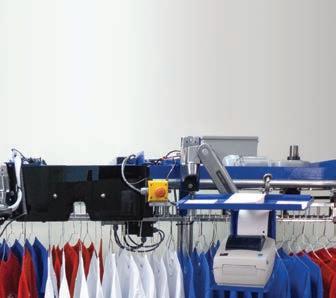

Can utilize a bar-code or RFID chip system
Easy-to-read computer touch screen
Highly accurate and reliable
Fast return on investment
Proudly made in the USA with fast support




Long-term success without effort is unattainable. I have been in and out of a lot of cleaning plants, but it seems that lately, many owner/operators are convinced that this business will function just as well without effort on the part of employees.
Is your business model based solely on turning “more pieces” as fast as possible, with little or no regard to the quality of the end service? The attitude is more prevalent than some are aware, or at least are willing to admit.
Just slow down a little bit. Give a little thought to reducing the use of “Sorry” tags by 10%. Let these tips help guide you:
• Inspect garments before they go to the finisher.
• Train employees to recognize “sweet spots” that are easily removed by a simple puff of steam.

• Establish standards that lend themselves to being proud to face your customers with an attitude that says: “We are proud of what we have done!”
The consumer has a right to assume there is a level of professionalism at the cleaners. That requires a certain amount of supplemental stain removal.
The day of leaving in stains due to lack of training and effort has come to an end.

The last 15 years has brought the industry to a much greater understanding of the factors that contribute to shrinking and dye migration. This, combined with pressure from government agencies to reduce the use of halogenated immersion solutions, has brought us to the point of a professional process referred to as wet cleaning.
But the term is misunderstood by many in the cleaning industry. Wet cleaning is the use of water along with specialized chemical tools and procedures, to handle items that are labeled Dryclean Only.
Wet cleaning is not just the use of water, but the use of water under a very specific set of circumstances and con-

trolled procedures. However, with the proper training in fibers, fabrics, dyes and trim, wet cleaning can be a valuable tool in cleaning.
Wet cleaning can be a time- and effort-saver in the stain removal process. One must control the temperature of the water being used. I always keep the water below 90 F. When you pass a temperature of around 95 F, you move into an area that can have a negative impact on the garment. Let the water work for you, but it must be at a lower temperature.
When an item has a care label that includes an acceptable use of water, you move from wet cleaning to “Fine Washable.” This is a sister process to wet cleaning.
All of the wet cleaning procedures can be used. However you have more flexibility in handling, and you are not going against the care label. You have to rely on your knowledge. This process falls between aggressive laundry practices and wet cleaning.
Some of the considerations are as follows:
• Loose weave requires light mechanical action.
• Ornate trim requires protection of the trim and light mechanical action.

• Bright colors need a very mild detergent.
The more you know, the easier and less risky the job becomes. Wet cleaning is an effective tool for garment care, but it must be applied with care and confidence. ADC
Martin L. Young Jr. has been an industry consultant and trainer for 20 years, and a member of various stakeholder groups on environmental issues. He grew up in his parents’ plant in Concord, N.C., Young Cleaners, which he operates today. Phone: 704-786-3011, e-mail: mayoung@ctc.net.

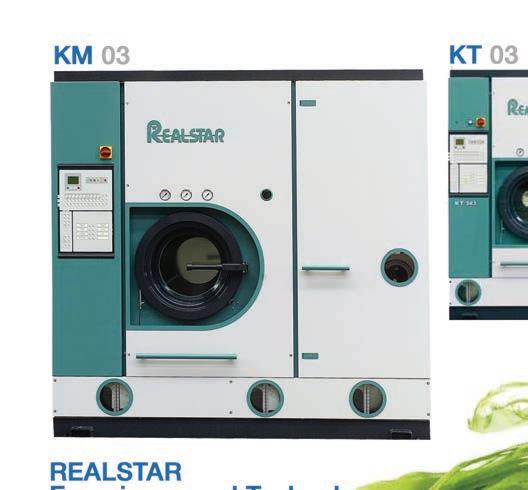





Tasked to become a “green” operator, University City Cleaners, in San Diego, recently ousted its cleaning practices for ecofriendly wet cleaning.
The foundational change left customers gleeful, the environment grateful and the business more productive and efficient. Who might owners Hyeon-Dong and Young-Sook Choi thank for the change? Their landlord, of course.
“Our landlord wanted to use our lease extension to renegotiate the lease terms in order to mitigate any risks associated with dry cleaning and its possible negative environmental effects,” says daughter Miriam Choi.

So, after 20 years in business, Choi stepped in to research non-toxic drycleaning alternatives on behalf of her parents. She referenced the California EPA guidebook, going so far as to contact the author and “pick his brain.” She sought information and validation from the California Air Resources Board. She called Kendall Hendricks at Hendricks Mechanical Inc., a full-service drycleaning equipment distributor in Fullerton, Calif.
“We feared that we would make this big business
change and purchase new equipment and potentially still not get our lease extended because we didn’t meet EPA standards,” says Choi. “So we wanted preapproval on the equipment replacement before making changes.”
After considerable due diligence, University City Cleaners removed its 60-pound capacity machine and replaced it with a Poseidon Textile Care System, consisting of a 60-pound capacity wetcleaning machine and matching dryer.
“The California Air Resources Board provided written approval that Poseidon did qualify for the nontoxic drycleaning program,” says Choi. “That validated the fact that we were replacing our drycleaning machine with a fully nontoxic alternative. We made the full switch this past year and it’s been great.”

The wetcleaning machine, according to Hendricks, brings advanced programmability and generates extract speeds up to 400 G-force.
It also offers complete control over water temperature by degree (up to 194 degrees), wash rotation speed and duration, five on/off wash rotation combinations, multiple water levels, bath cool-down by degree, (continued)
“Not only did I reduce my assembly sta from 2 people to 1, I also noticed signi cant reduction in mark in labor costs as well.The opportunity for human error has been vastly reduced. I should have switched years ago when Brett rst spoke with me!!”








“I can honestly say that the QuickSort is the single best item I’ve ever purchased. The direct labor saving payback was less than one year. The increased e ciency from barcoding at the mark-in counter coupled with the complete elimination of assembly mistakes makes this the smartest business decision I’ve ever made, and one that is paying daily nancial dividends. “



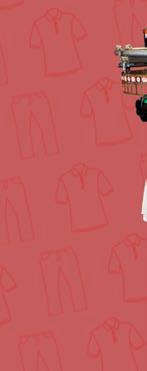


 Allan R Cripe CED,CPD
Brian Robertson
Owner, Valet Cleaners and Coin Laundry
Allan R Cripe CED,CPD
Brian Robertson
Owner, Valet Cleaners and Coin Laundry
automatic chemical injection, and six programmable extract speeds.
It’s so flexible, it can be programmed for a wash cycle of as little as three minutes up to an extended program lasting for hours or days.
An auxiliary heat option enables bath water temperatures to be increased by degree. Optional overnight soak and delayed start are also standard features.
The new dryer, according to Hendricks, touts the industry’s newest technology and complete phased control over the drying process.
Each phase is programmable for drum rotation speed, drum rotation interval, moisture level, timed reversing, input air temperature, drying temperature, heating temperature, drying time and time limit.
“The dryer comes from the firm already programmed and it’s the key to the whole system,” says Hendricks. “Drying the garment properly without over-drying is critical so it isn’t damaged due to shrinkage or heat.”
He notes the dryer has an enclosed heater so there is no open flame to create hot spots: “It’s programmable by phase and features moisture sensing so it stops when a garment hits a preset moisture level. Most dryers don’t allow control over inlet and outlet heat, or such phased programmability.”
The result is that all items — from wedding dresses and wool suits to silk blouses and cashmere — can be safely wet cleaned, dried and then finished, according to Hendricks. “Air drying will soon be a thing of the past,” he says.
Once garments are wet-cleaned and dried, they are finished, packaged and prepared for pickup. “We use tensioning finishing equipment to finish garments by blowing steam into them,” says Choi.
But, switching from dry cleaning to wet cleaning must
have posed challenges? Not really, says Choi. “Once the machinery was installed, the transition was easy.”
At University City Cleaners, nearly all garments are now wet cleaned, regardless of fiber type. “While certain items are approached with more caution, the new system can tackle just about anything,” she says. “We utilize approximately 10 programs in the wetcleaning process and about 10 programs in the drying process,” says Choi.
And despite replacing one machine with two, the changeout freed up space, offering more operator elbow room.
Not only are customers happy, the Choi family feels good knowing the business is environmentally responsible.
“We have noticed tremendous benefits to wet cleaning,” says Choi. “Since switching over, we have received positive feedback from our customers with consistent remarks about a cleaner smell, better odor removal and overall superior cleaning quality.”
Not to mention, University City Cleaners is more efficient. By saving on electrical costs, waste disposal fees, permitting and solvent costs, wet cleaning is expected to also positively impact profits.
Says Hendricks: “University City Cleaners will definitely save on the utility side.”
And that’s a good thing since San Diego Gas and Electric charges for electricity based on usage tiers. As electricity consumption increases, users run the risk of moving into a higher tier, where they are billed at a higher rate.
Finally, according to Choi and Hendricks, University City Cleaners is more productive with wet cleaning –successfully completing more garment pounds per hour.
“Using the 60-pound capacity wetcleaning machine and dryer, University City Cleaners can wet clean, dry, finish and package 90 pounds of garments in 75 minutes,” says Hendricks. “Using their old 60-pound capacity machine, it took the same amount of time to process just 60 pounds.”
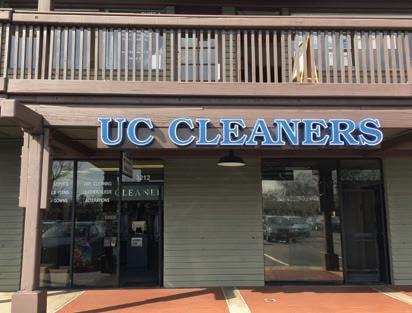
But to Choi and her family this is merely a side benefit of doing the right thing for the environment.
“The best part of this change has been the tremen dous feedback we’ve received from our customers and community,” she says. “We’re excited to be leaders in the industry by making the switch to wet cleaning and happy to do our part in minimizing our environmental footprint.”
In the end, University City Cleaners has created a situation where everybody wins. ADC




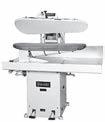





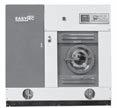














Did you know that one of the singularly largest liability exposures to your company is your business auto exposure?

Think about it: You have various employees driving your vehicles when you are not around. They may be tired, driving distracted, impacted by weather conditions or countless other distractions.


However, if they cause an accident and cause injury to other people’s property, person, or vehicles, your drycleaning company could be directly in the line of fire for a liability suit.
As a business owner, you are juggling a lot of exposure to your business. Often it’s a struggle to master the balance between getting the coverage you need to protect your business and keeping your costs low.
So how can you master the balancing act of protecting your business, training your drivers, and keeping your costs low?
Check out these top tips to get the coverage you need to protect your fabricare business and help maximize the discounts on your cleaning business’ auto policy.
Across the board, without exceptions, all business owners that have a business auto component should have an employee safety manual that is reviewed and signed off on by all employees who will be driving.

Included in this manual should be a disclaimer that there is a zero tolerance rule for texting and driving.

Some businesses choose to install a mobile dead-zone device in all business vehicles. This ensures that while the vehicle is in drive, no texts messages are able to be received or sent and all calls are blocked.
The owner of the account is able to adjust security settings to accommodate the employee’s role with the company. Ask your insurance agent if discounts are given for mobile-blocking devices.


All employees that are going to be driving should have a driving background check conducted before employment. If this is not part of the current hiring process, business owners should consider making this mandatory.
Insurance companies will do a driving background report on all drivers that are added to your policy. If you have hired and are utilizing drivers that have a poor driving history, this can drastically increase your auto insurance rates.


Some business owners even call their insurance company to get a price check on adding a particular driver before hiring is finalized. Check with your agent on what process works best for adding new hires to your business auto policy.

Are your vehicles covered at your operation? Your ‘assets’ are on the lineBy Kelley Carter (Image licensed by Ingram Publishing)
If you have business vehicles, you should conduct periodic training with your team on safe driving practices.
Some businesses bring in OSHA safety teams once a quarter to conduct safe driving workshops. Others require their drivers to watch training videos on safe driving practices and sign off on the trainings.
Having documented training on file not only provides discounts for your auto policy, it also helps establish a documented trail of accountability for your drivers.
Your vehicles should have a routine maintenance program to check the overall safety and function on the vehicles. This not only helps ensure the safety of your drivers, it also can provide discounts on your auto policy.
There should be a routine, documented maintenance checklist for all vehicles to include mileage logs, oil changes, tire pressure checks, tire changes, and overall “health” of the vehicle.
Many owners have logs in each vehicle and part of their safety procedures is that before leaving each day, the employee driving the vehicle has to log various points such as mileage, test the lights and turn signals, brake lights, tire pressure, etc. and sign off before starting their route.
OSHA can be a great resource for safety procedure templates as can your insurance agent.
Many business owners choose to install GPS tracking devices on their vehicles so that in the event of a theft it is easier to re-claim their autos. A GPS can also be helpful to track employee routes and increase efficiency.
Many insurance companies have partner vendors for GPS devices and may offer a discount for autos that have this equipment installed.
If vehicles are taken home each night by employees, a GPS can help ensure that the auto is being used only for business purposes which can also help add savings to your policy.
If vehicles are stored at a central location and taken out each day by employees, be sure that the vehicles are stored in a well-lit, secure location. If your business has access to a gated, fenced area that can be locked at night, it is ideal to store the vehicles in this location.
Be sure to mention safety practices employed at your drycleaning operation, such as storage, tracking, and these other tips, to your insurance agent. ADC
Kelley Carter, CPIA, is the vice president of marketing and a licensed agent with Choice Insurance Agency. She can be contacted at: kelley.carter@choiceins.com.


 By Justin R. Parafinczuk
By Justin R. Parafinczuk
Drycleaning establishments are not exempt from negligent security claims.


Negligent security often involves serious crimes with severe damages that can even include assault, rape and death cases.
Juries tend to want to punish someone in these cases, and because the criminal assailant doesn’t have any money, the next in line is the owner. These claims fall into two subcategories: 1) failure to maintain adequate security measures
2) failure of the actual security measures in place.
An allegation of failure to maintain adequate security measures may be levied against a dry cleaner that is in a well-known high crime area, has a dimly lit parking lot and has no security guard or surveillance camera system.
Unfortunately, it really is as simple as that to get a case started against that hypothetical establishment.
An allegation of failure of actual, presumably sufficient security measures could arise if said dry cleaner had a lone security guard fall asleep as a crime occurred on premises.
The majority of litigation is from failure to maintain adequate security measures. It’s difficult for an owner to maintain sufficient security because it’s usually a moving target.

So how does an owner take steps to avoid a negligent security lawsuit? This is the million-dollar question.
To protect your drycleaning business, it is recommended that an owner hire a security professional to evaluate all aspects of the cleaners for potential exposure.
Security consultants are everywhere and an opinion
from a good one is worth its weight in gold in the prevention department. But, even without hiring a professional, here are five things every owner of a drycleaning business should be looking at from a security standpoint.
Sadly, this should be a given for any business owner. Statistics show that surveillance cameras deter crime.
They are also effective in catching staged slip-and-falls to prove that there was no spot remover dripping on the floor, or plastic carelessly left in the doorway.
There was a time when a surveillance system was simply not affordable for some businesses. Now, the technology is easy, accessible and relatively cheap.

Most police stations have data about criminal activity easily accessible in a given radius from your place of business. If not, you can request information and a security expert can produce important statistics.
If a violent crime occurs and someone is seriously hurt or killed on the property, a lawyer will obtain the crime grid. If the data reveals hundreds of violent crimes occurred in the past year in the dry cleaner’s 3-mile radius, the owner should have taken appropriately strong security measures.
Even if there was significant criminal activity in an adjacent parking lot — or equally important, a nearby drycleaning competitor, the owner has the responsibility to take preventive steps. If not, the owner has a serious problem with liability.
Security cameras can help prove a slip and fall was
Five critical ideas you need to help prevent negligent security lawsuits(Image licensed by Ingram Publishing)
planned, but there is still the obligation to make sure there is nothing to slip on.
Don’t give the judge any reason to believe that there was liquid, paper, plastic, hangers or any other type of debris on the floor. Make sure to clean floors right after an accident occurs, and post caution signs.
This includes uneven floor surfaces, doorways with low ceilings, hot machinery, and any exposed wires which of course, should be tended to as soon as possible.
Most businesses do a criminal background search before hiring anyone. There are several inexpensive options to obtain background checks, but they are cheap for a reason: accuracy is a question.
As the owner of a dry cleaner, with a lot of customers of all ages, it is nearly indefensible if there is a person work ing there with convictions or charges for violent criminal acts, and ends up snapping back to their old ways.
Customers are expecting a safe environment, as brief as their visit to the cleaners is.
A reputable internet search company is recommended, or one done by a professional.
On site, security companies and police are a crime de terrent. However, they do not prevent crime.
Plaintiff’s attorneys frequently argue that security of
ficers should have prevented the crime that occurred there. This is often a false statement, and most times impossible.
The simple rule is if your drycleaning business is in a low crime area with no incidents of violent crime, a secu rity company providing an unarmed guard is adequate to rebut a claim of failure to maintain adequate security.

If there is a history of crime in the area, an armed police offer is a good idea — and good practice for all areas of businesses.
There’s no fail-safe method to eliminate the possibility of a lawsuit, but these measures will put any drycleaning business in a better position to defend itself if one comes.
Experience shows that the owners who cut corners on security measures have been hit with the hardest law suits. The adage, “An ounce of pre vention is worth a pound of cure,” is valuable.
ADC
Justin R. Parafinczuk, Esq. is a board certified civil trial attorney, focusing his practice on professional liability, negligent security claims and complex commercial litigation. He can be con tacted at parafinczuk@kplaw.com.

Souvenirs!
(continued from page 26)
New Orleans has stores. It has art markets, farmer’s markets, and it also has voodoo stores, where you can find all sorts of oddities and souvenirs.
Some of the places you might want to check out include Magazine Street, which neworleans.com describes as: “Stretching six miles parallel to the Mississippi River from Canal Street to Audubon Park, Magazine Street travels from the Central Business District and the Warehouse Arts District through the Garden District and Uptown.
“Originally named for a warehouse that Spanish Governor Miro built to house Kentucky tobacco and other exports, this retail street’s stores offer a delightful antidote to the typical mall experience. Clusters of shops are interspersed with charming homes, and a mix of renovated warehouses and shops selling housewares, pottery, period furniture, clothing, books, glass, toys, china, soaps and jewelry.
“Magazine Street is the ideal spot for a leisurely walk-about, with plenty of coffee shops, cafes and restaurants to provide a pit stop and refreshment to the tired shopper.”

There’s family-owned antique shops and fine art galleries on Royal Street, which is just a block from Bourbon Street. There are also art markets all throughout New Orleans; music and vinyl stores full of Zydeco, funk, blues and jazz; and occult shops which dot the

French Quarter where you’ll discover “colorful bits of legend and lore,” as neworleans.com says.
O FF THE BEA T EN PAT H:
• Rock ‘n’ Bowl, 3016 S. Carrollton Ave., New Orleans. Website: www.rocknbowl.com
Their website describes it like this: “Bowling lanes with a bar and Creole-inspired eats plus live music by local legends and a dance floor. One Stop Dine & Rock!”
• Hansen’s Sno-Bliz, 4801 Tchoupitoulas St., New Orleans. Web: www.snobliz.com
They say they are a, “family-owned sno-ball stand mainstay since 1939 that’s famous for soft shaved ice & homemade syrups.”
• Tipitina’s, 501 Napoleon Ave., New Orleans. Ph: 504-895-8477 Web: www.tipitinas.com
Their description: “Rustic, black-and-white tiled warehouse space & landmark since ’77 for live music & Cajun dancing.”
• Marie Laveau’s House Of Voodoo, 739 Bourbon St., New Orleans. Web: www.voodooneworleans.com
“Tiny shop with items such as voodoo dolls, talismans & spell kits, plus on-site psychic readings.”
• Museum of Death, 227 Dauphine St., New Orleans. Web: www.museumofdeath.net
“The World Famous Museum of Death was founded in June, 1995, to fill the void in death education in this country. Self-guided tour takes 45 minutes, or stay longer if you can stomach it.”
• Antoine’s, New Orleans
• Brennan’s, New Orleans
• City Park Botanical Gardens, New Orleans
• Masquerade Nightclub, New Orleans
• New Orleans Pharmacy Museum, New Orleans
• Preservation Hall, New Orleans
• St. Louis Cathedral, New Orleans
• Jean Lafitte National Historical Park and Preserve, Marrero, La.
• Insta Gator Ranch, Covington, La.
So there you have it.
A little voodoo, a Hurricane or two, suggestions for keeping cool and getting around. And in Eats ‘n’ Beats, our locals graciously tipped you to their favorite places to eat, drink, and go clubbing.

Oh, and, plenty of fests, day trips, shopping, and other ideas for places to visit, either well known or off the beaten path, in the Crescent City in June.
Did we Rock you like a Hurricane?
Even if we didn’t, New Orleans and Clean ’19 will.
So.... you’re going, right?… Come on, come on, come on, come on! ADC

“My customers are my friends in Fairfield,” relates Dave Frey, owner with wife Lil, of Pleasant Run Dry Cleaners which recently celebrated 40 years in business.

The cleaners started in 1978. “I was in the restau rant business, then the trucking business and also was working for my best friend learning dry cleaning,” Frey recollects.
“My uncle was a dry cleaner in 1977. His wife and my mother broke away and started Pleasant Run Clean ers. There was myself, my wife and one presser. And since Day One, my wife Lilli has been doing altera tions. Since the start,” Frey says.
“My daughters started in high school working the counter and then pressing, and then learning the whole deal,” Frey says, explaining about family involvement.
The business, he points out, received recognition from the Ohio State Assembly on its 40-year milestone.
“Today, Frey notes, “wet-cleaning shirts is a big part of what we do now. We clean a couple thousand shirts a week now.”
How does the future look?
Frey exclaims: “One of the biggest things keeping me going is my team. There are three people who have been with me for many years, one for 20 years.”
Also talking about his business’s longevity, Frey cites the devoted customers in his town, who are their friends, and notes that, “even if they move away, they
come back to get items cleaned.”
He also adds that: “Now my granddaughters work at the business, they are in their 30s.”
Frey concludes: “I’m gonna be here ’til I can’t walk
Libertyville Rotary Sunrise and Zengeler Cleaners an nounced the results of their 2018 Coats For Vets cloth ing collection drive.
This year’s effort, Zengeler reports, resulted in 2,186 coats and jackets, along with hundreds of pairs of gloves, scarves and other winter garments, collectively valued at more than $300,000.

It’s become a fall tradition: for the past several years, they have teamed up to collect coats, gloves, scarves and other winter clothing in support of the nation’s veterans. It’s their way to say “thank you” to our vets for provid ing the freedom we enjoy, Zengeler notes.
“There are many challenges facing our veterans as they return from active duty,” relates Tom Zengeler, president of Zengeler Cleaner.
“Fortunately, support for this cause continues to be strong every single year,” continues Zengeler. “The local community pulled together with timely donations to once again show we really care about our veterans.”
anymore!”Dave and Lil Frey, owners of Pleasant Run Dry Cleaners in Fairfield, Ohio, celebrate 40 years in business. (Photo: Pleasant Run Cleaners) Icela Chavez of Zengeler Cleaners inspects the do nations to Coats For Vets. (Photo: Zengeler Cleaners)
“I consider myself a farmer,” says Ryan Sorensen by phone. He and his wife Cherilee, as of January 1, 2019, are the new owners of Crystal Cleaners here in this northwest Nevada town of about 8,000, where state highways 50 and 95 meet, 60 miles east of Reno.
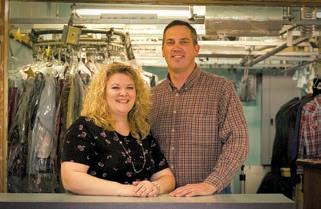
Fallon is the county seat of Churchill County, Ne vada, and the cleaners Sorensen purchased serves a county-wide population of 30,000. His is the only dry
cleaner in the entire county, he points out.
Ryan has experience managing his family’s ranches. “This is my seventh business. I am a rancher. We were dairy farmers, now we work with the dairy industry.”
Why buy a dry cleaner?

“It was going to close,” he says. “This is the only dry cleaner in Churchill County. I didn’t want to drive to Reno to clean my clothes! We serve most of central and western Nevada, from Ely to Reno.”
He notes: “We hope to serve Fallon as well as the former owner did. She treated everyone like family. We want to continue that tradition. I am trying to expand as well with pickup and drop-off services.”
Fallon is also the location of a U.S. Naval Air Station and home of the Top Gun training program since 1996. The cleaners provide services for the military personnel stationed there.
Sorensen notes: “We contract with their laundry service on the base. We do daily pickup and drop-off, and it gets especially busy when training crews come in. It’s a huge influx of work, with items like patches needing to be sewn on uniforms is a big thing.”
Sorensen adds: “When Top Gun trainees come in, all heck breaks loose! The city feels it! My business jumps. Pizza orders go sky high too!” ADC
Polyester!”
There. I said it. Is there a disco ball flashing roundand-round in your memory right now?!

Don’t go running away. (And for gosh sakes don’t go running to your closet to find your disco-era shirt.)
Polyester’s source is petroleum, as author Norman Oehlke states in his book Complete Spotting Guide & More (published by American Drycleaner and available at americandrycleaner.com).
Polyester, as Wikipedia points out, can be a thermoplastic, “depending on the chemical structure.”





It is a category of polymer that contains, “the ester functional group in their main chain,” Wikipedia continues, adding that it can include, “naturally occurring chemicals, such as in the cutin.” (Cutin’s basically a waxy polymer that covers a plant’s surface). Wikipedia notes that polyester also contributes to the making of bottles,
films and canoes. (Canoes!?!)
Oehlke writes: “It can feel lightweight like silk; has a great affinity for oily stains; is wrinkle-resistant; retains creases and pleats (often labeled permanent pleat); is often blended with wool, rayon and cotton used in making microfibers.

“It has good dimensional stability and is strong; usually very colorfast to dry cleaning and washing.”


Neither of the sources mention how well it looked as a disco suit, flashing on the crowded dark dance floor, under a spinning, sparkling disco ball, flooded by blinking colored lights synched-up to 70s disco music. (I can almost hear Donna Summer singing, in grief-ridden tones, “Someone left the cake out in the rain....”)
If you still have your polyester suit from 1977, well, just take my advice and keep that to yourself. Disco is probably not apt to be coming back anytime soon. Or ever. ADC
From site selection to cutting the ribbon, what it takes to design a plant, told by the grand-prize winner of American Drycleaner’s 58th Plant Design Awards, Tide Dry Cleaners, Sarasota, Fla.






Are your routes covered? Your customers’ clothing? Ann Hawkins, vice president, NIE Insurance, talks coverages, claims, and drycleaning owners’ commonly asked insurance questions.


How do you reach out to peers in the fabricare industry? Nora Nealis, executive director, National Cleaners Association, shares ways drycleaning owners can connect with colleagues.
NETWORK AND CONNECT WITH INDUSTRY LEADERS, EXPERTS AND PEERS.
• 450+ EXHIBITING COMPANIES exhibiting over one-quarter-million net square feet
• 11,000+ PEOPLE from 100 countries
• LIVE DEMONSTRATIONS of the latest equipment and technology
• NETWORKING with manufacturers, suppliers and industry peers
2019 RATES: One- to five-time rate: $2.15 per word, boldface $2.25 per word. Minimum charge: $25.00 per ad. Call or write for our three- and 12-time rates. If box number is used,

add cost of 5 words. Display classified rates are available on request. All major credit cards are accepted. DEADLINE: Ads must be received by the 1st of the preceding month.
Own Your Own Drycleaners—Managers, Spotters, Tailors, Pressers! 100% Financing. Plant or Drop, location of your choice. Call 1-561-302-5031 or 1-888-275-6637.

For example, for a June ad, the closing date is May 1st.
PAYMENT FOR CLASSIFIED ADS: Must accompany order.
Our brokers have extensive experience in the industry as operators, equipment and chemical sales. Trust your business sale to a company that knows your industry inside and out. Buyer? Contact us for active listings National Coverage Marc Lazarus • ML@Tworld.com 201-370-9600
DryCleanerSoap.com
Western Wonder Touch POS Systems $990 Refurbished, $1950 NEW All Commercial-grade Hardware Free New Cash Drawer & Free Shipping! Perfect for small to medium cleaners www.westerndccomputer.com 773-878-0150, westernk@msn.com
www.AmericanDrycleaner.com
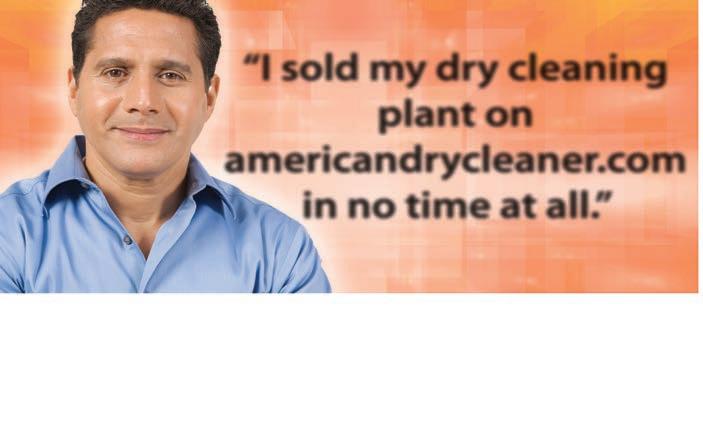

One well-established, successful dry cleaning and laundry plant plus two substations for sale in Houston. Good regional name recognition. Annual sales $750,000. Will train if no experience. Call Val 281-235-7588
2-Ajax Drapery Press 110” 2-Adjust Drape Contact Jeff Stone 309-692-2375
THE
The latest news, straight to your inbox, 2X a week



10 YEARS AGO. The global slowdown is getting blamed for faster-thanexpected declines in U.S. nonmanufacturing sectors. A report from The Institute for Supply Management (ISM) says that the index fell to 41.6% in February from January’s 42.9%; any reading below 50% indicates that more firms are contracting than expanding.
35 YEARS AGO. “50 Years of Progress” wrote Earl V. Fischer, then editor of American Drycleaner, in the magazine’s golden anniversary issue of April 1984. “So many memories are shared in this special anniversary issue,” he wrote. Here’s just two of those many memories shared by members of the fabricare industry, printed in 1984’s golden anniversary issue, that he refers to: “I can recall when we were cleaning a pair of pants for 39 cents, which was very unrealistic. But you could make a small profit because wages were very low.” Here’s another reader thought shared in that same 1984 issue: “I love my profession and talking about it, and the American Drycleaner has been my bible throughout my career.” …. $875 for cleaning one gown! We’ve seen the invoice and the check. The gown was processed by a cleaners in Texas for $875. The white lace wedding gown, with halo, two veils and a petticoat, was valued at $20,000. It was for the “wedding of the decade,” according to a local newspaper.
The April 1984 front cover celebrates the 50th anniversary issue of American Drycleaner.

50 YEARS AGO. It’s April … and income tax time again! We’re wryly amused by the plight of several U.S. Congressmen who live in Maryland, just outside Washington, D.C. Seems they’re up in arms because they have to pay the country’s income tax. In fact, one Congressman from Texas has flatly refused to pay it and is being hauled into court as a test case. Well, we don’t like to pay income taxes either! And somehow we think that these Congressmen should pay their taxes — like the rest of us — and keep quiet. After all, we wouldn’t want our Congressmen to forget what it feels like
to pay taxes — every blasted cent of taxes — would we?
75 YEARS AGO. Commended for Courage. (The following story was written by a Marine Corps combat correspondent.) Cape Gloucester, New Britain (delayed) — For courage, initiative, and leadership displayed as the leader of an artillery forward observation team, Marine Maj. George Edward Bowdoin, 46, has been officially commended by Maj. Gen. William H. Rupertus, commanding general of the Marine forces. As marine infantry and tank units pushed toward the vital Jap airdromes, Major Bowdoin obtained permission to establish his observation post ahead of the lines. During the night he made a personal reconnaissance within the enemy positions to secure data for accurate artillery support of the drive. His efforts were credited with contributing greatly to the success of the operation. Maj. Bowdoin quit the general managership of a manufacturer of drycleaning and pressing equipment in New York City for a Marine Corps commission in June 1942. He learned of his promotion from captain to major a few hours before hitting the Cape Gloucester beach. ADC
— Compiled by Tim Burke, Editor
To read more of American Drycleaner’s chronicling of the industry over the years, visit www. americandrycleaner.com.

101-105 Series
We expect 15 to 25 years from our interchangeable tube bundles, and 30 to 40 years of life our more out the boiler.
209-211 Series
We normally expect 10-25 years out of the copper heat exchanger, 30 to 40 years out of the boiler.

207 Series
We expect 30 to 50 years out of our thermal fluid heater models
On all of the above units we have continued to build, and will continue to have available any part of the pressure vessel, burners, cabinet, and controls meaning that for as long as a customer wants, they will be able to infinitely repair their equipment rather than replace the equipment.
We are asked by many new and existing customers on what is our projected life expectancy of our products. We are not always the lowest initial price but know we have one of the lowest cost of ownership of any boiler manufactured in North America. These facts are based on our 90 plus years of boiler manufacturing, feedback and experiences from our end users, service departments, and all of our representatives and dealers worldwide. These life spans are based on our boilers being installed properly, and do receive our minimal recommended care, are applied to the correct application, and include the proper maintenance and water treatment programs.
“
fter waiting several years to choose an alternative solvent and machine, I’m happy I waited. SENSENE™ and Columbia has replaced PERC in our cleaning plant without any increase in labor or decrease in quality of cleaning. I couldn't be happier with my choice.”
fter waiting several years to choose an alternative solvent and machine, I’m happy I waited. SENSENE™ and Columbia has replaced PERC in our cleaning plant without any increase in labor or decrease in quality of cleaning. I couldn't be happier with my choice.”



AAfter waiting several years to choose an alternative solvent and machine, I’m happy I waited. SENSENE™ and Columbia has replaced PERC in our cleaning plant without any increase in labor or decrease in quality of cleaning. I couldn't be happier with my choice.”








~Charles D’Angelo,
Oak Neck Cleaners West Islip, NY, USA~Charles D’Angelo, Oak Neck Cleaners West Islip, NY, USA
~Charles D’Angelo, Oak Neck Cleaners West Islip, NY, USA
“
“


e have been a perc plant for over 50 yrs. None of the alternative solvents out there made us want to switch. Although one in Europe was making its way to the States had us intrigued and that was SENSENE™. Stephen from Columbia Drycleaning Machines gave us the run down on all alternative solvents. We went with SENSENE™. It would clean better then Perc. No odor. We were the 1st Columbia SENSENE™ machine in the state of Ohio. The machine and solvent choice is the best choice for any former perc cleaner. Beads, leather are not a problem anymore, whites are white. The learning curve was minimal. We advise anybody looking for alternative solvents, SENSENE™ and Columbia are the right choice.”
e have been a perc plant for over 50 yrs. None of the alternative solvents out there made us want to switch. Although one in Europe was making its way to the States had us intrigued and that was SENSENE™. Stephen from Columbia Drycleaning Machines gave us the run down on all alternative solvents. We went with SENSENE™. It would clean better then Perc. No odor. We were the 1st Columbia SENSENE™ machine in the state of Ohio. The machine and solvent choice is the best choice for any former perc cleaner. Beads, leather are not a problem anymore, whites are white. The learning curve was minimal. We advise anybody looking for alternative solvents, SENSENE™ and Columbia are the right choice.”
WWWe have been a perc plant for over 50 yrs. None of the alternative solvents out there made us want to switch. Although one in Europe was making its way to the States had us intrigued and that was SENSENE™. Stephen from Columbia Drycleaning Machines gave us the run down on all alternative solvents. We went with SENSENE™. It would clean better then Perc. No odor. We were the 1st Columbia SENSENE™ machine in the state of Ohio. The machine and solvent choice is the best choice for any former perc cleaner. Beads, leather are not a problem anymore, whites are white. The learning curve was minimal. We advise anybody looking for alternative solvents, SENSENE™ and Columbia are the right choice.”


~Thayne Albrecht, Manager, Blue Ribbon Cleaners
~Thayne Albrecht, Manager, Blue Ribbon Cleaners
~Thayne Albrecht, Manager, Blue Ribbon Cleaners